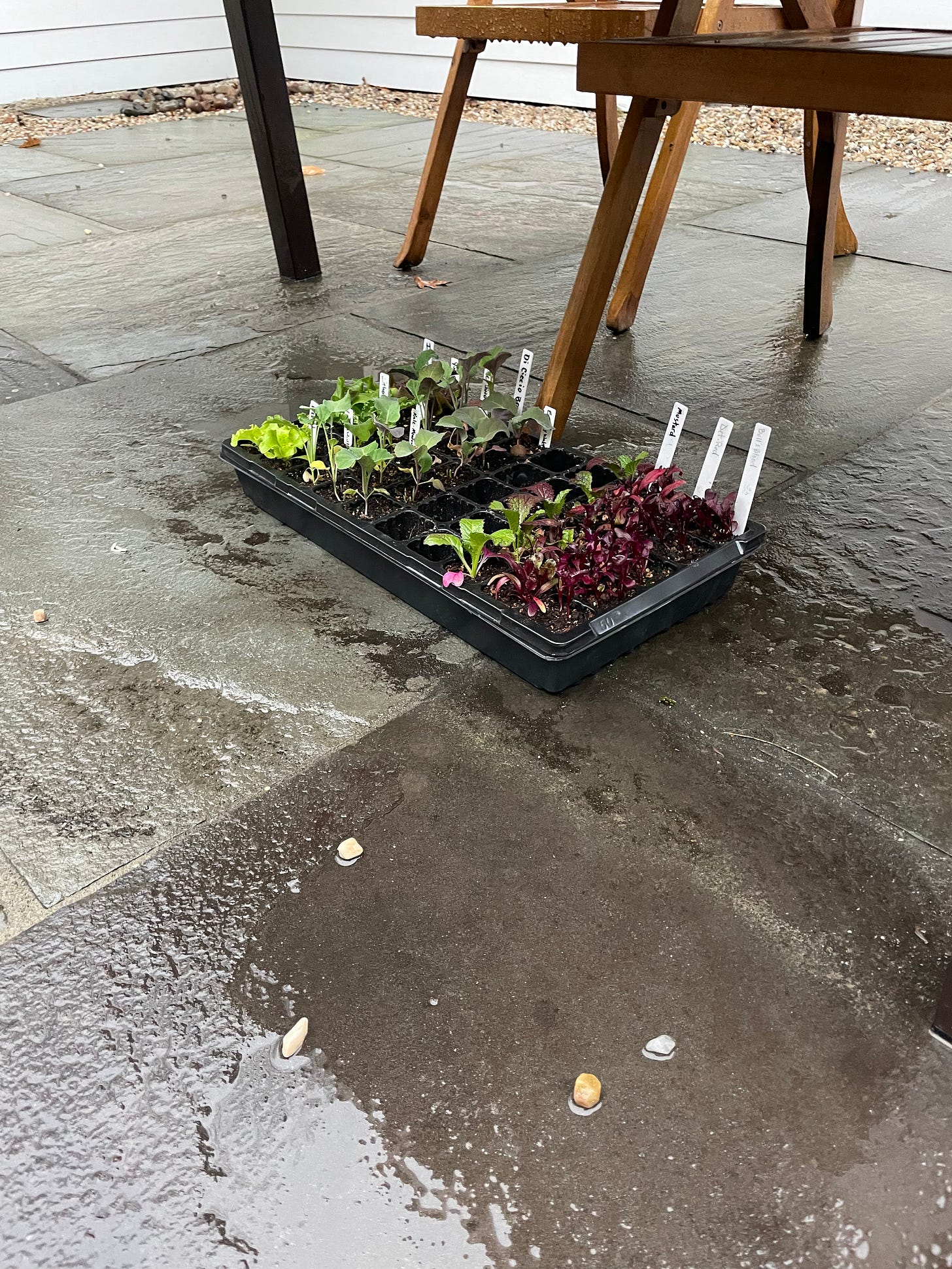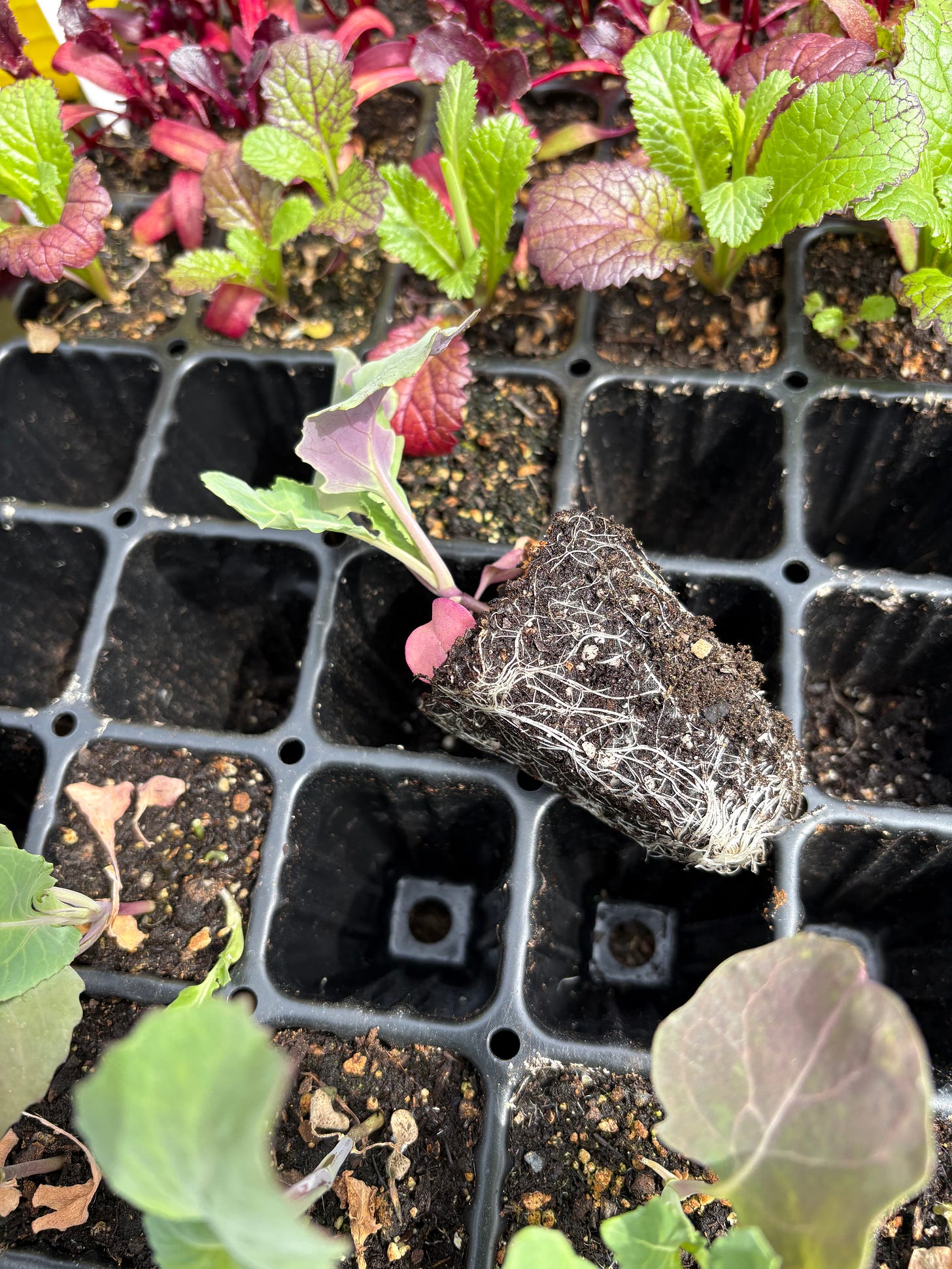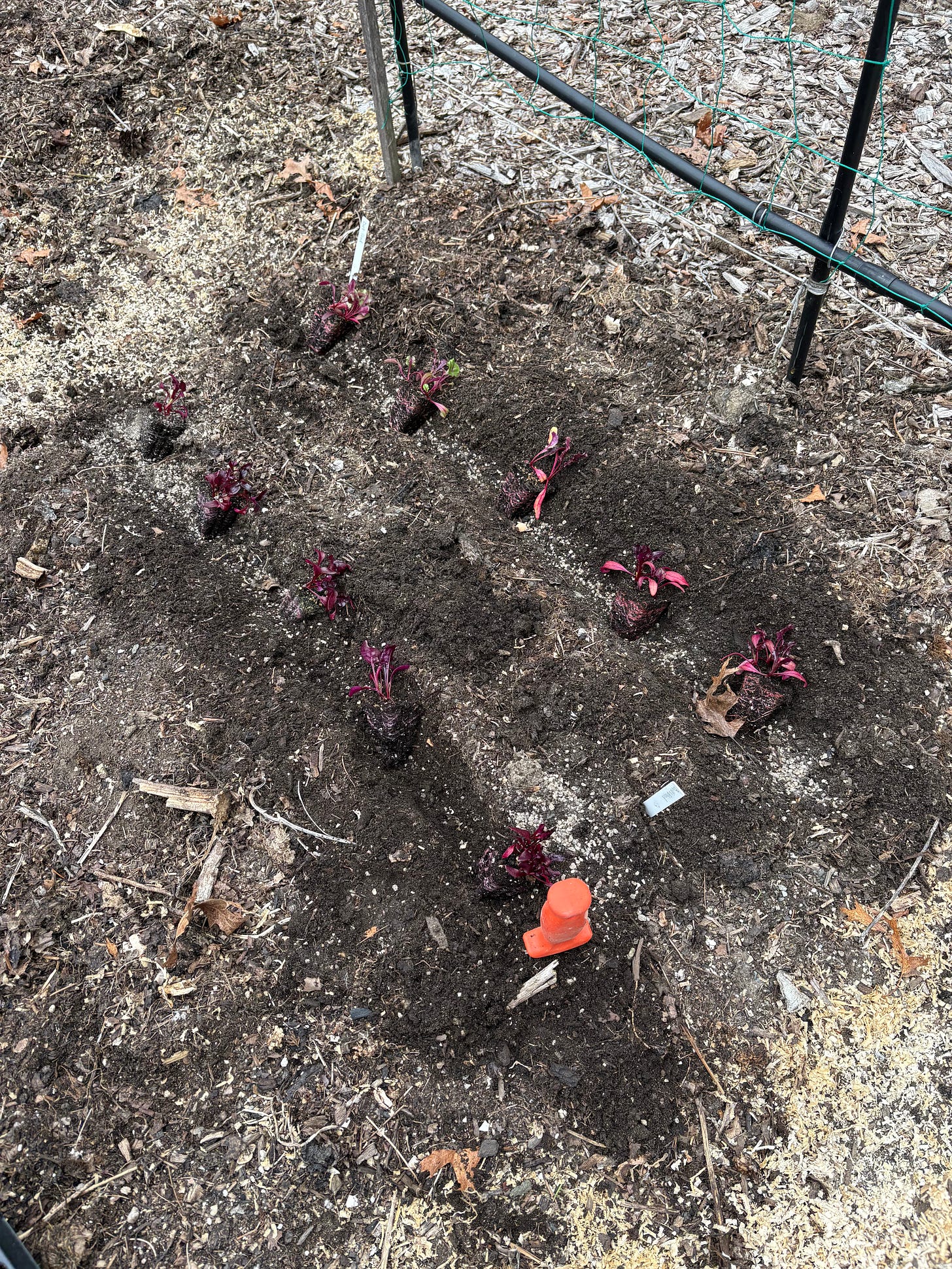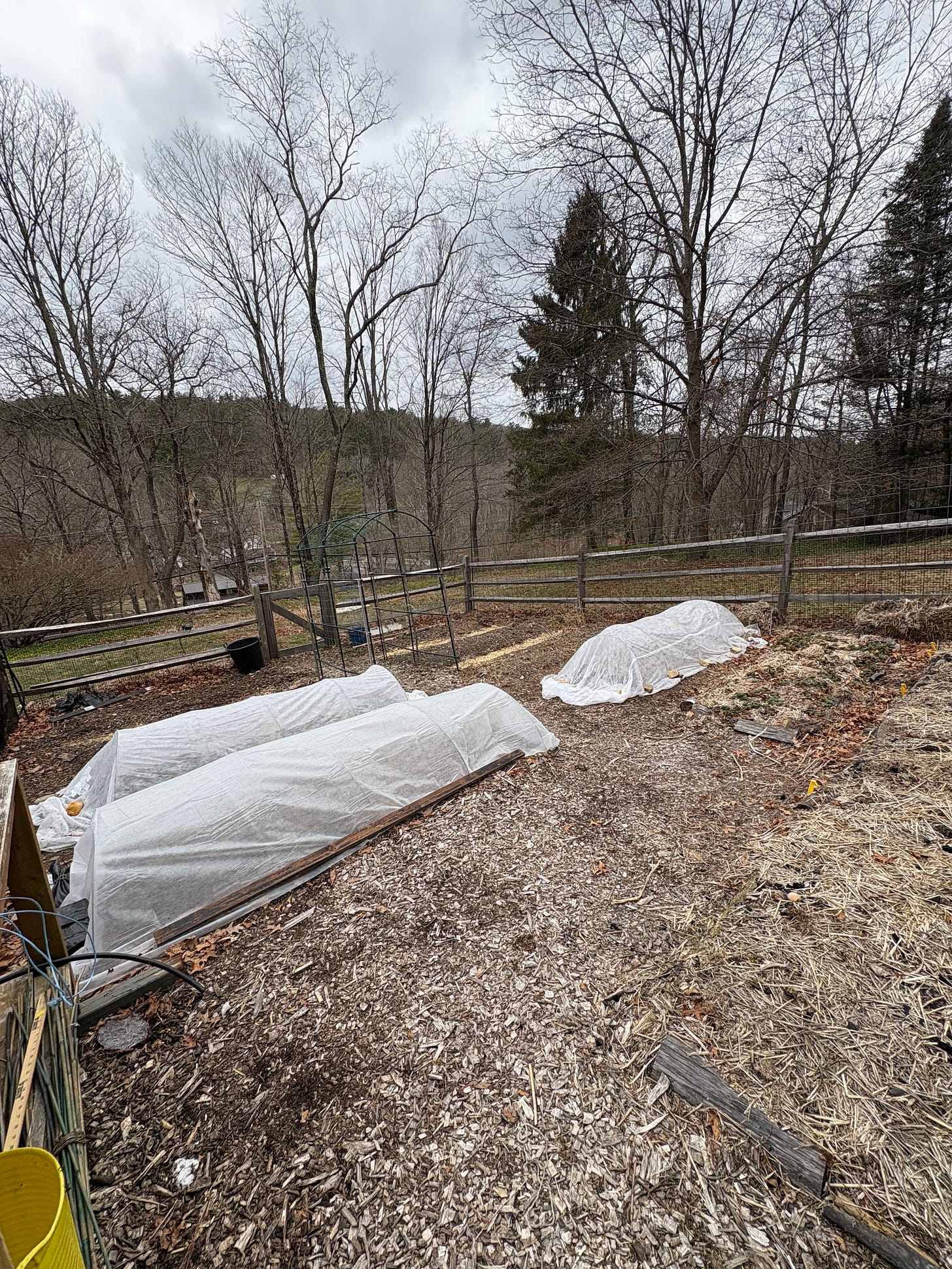What’s happening in the garden this week: April 6-12
Potting up, hardening off, planting out and trying some new things
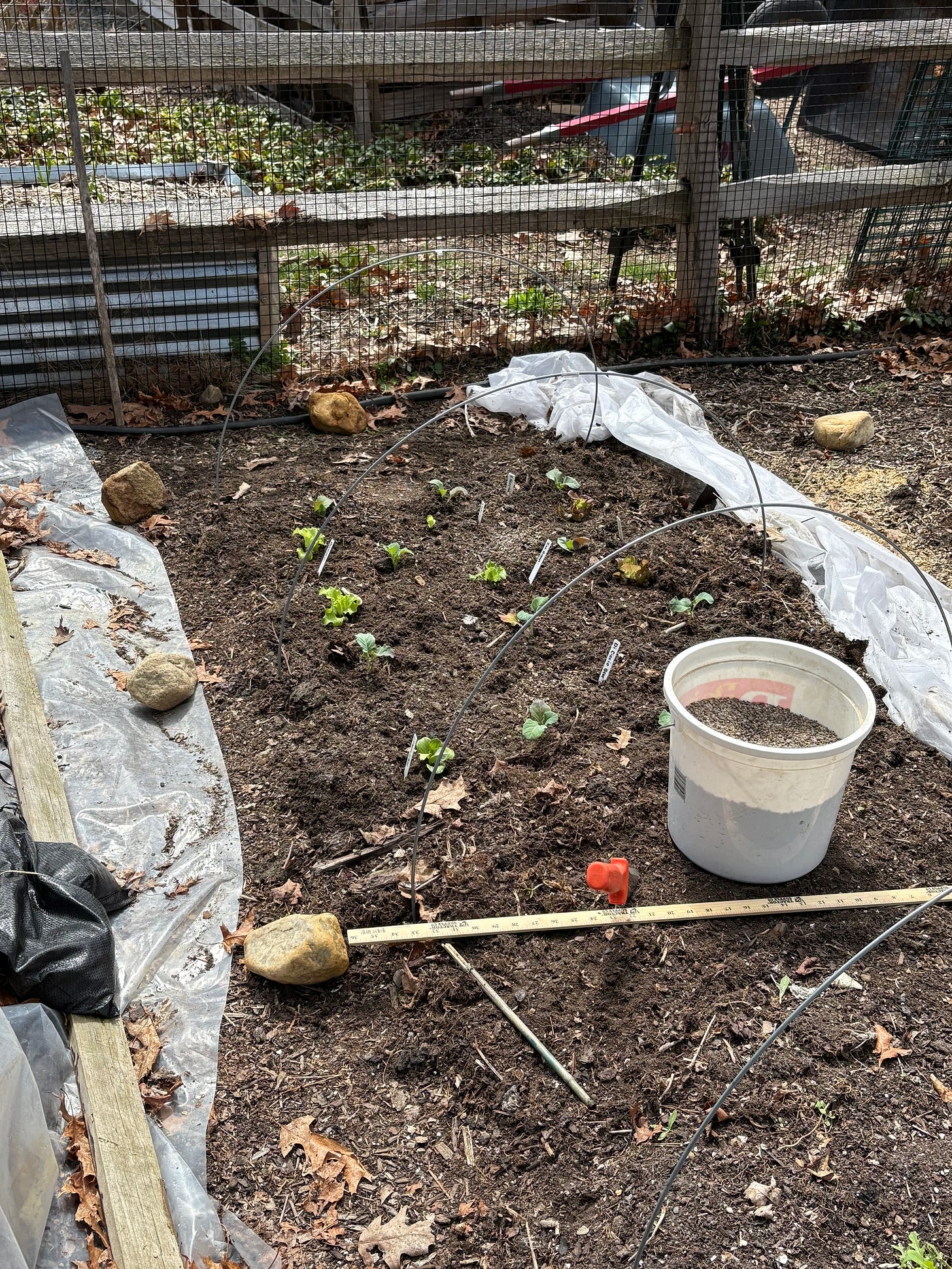
Potting up
Many of the seedlings growing under LED lights on shelves in the basement for the past month or more are beginning to get big enough to begin planting them into larger pots. I’ve been starting most seeds this season in plastic flats with 1½ by 1½ inch cells. That’s big enough to hold many vegetables and annual flowers until it’s time to plant them outdoors. But some, especially perennial flowers and tomatoes and peppers when they get big enough, are helped when transplanted into larger pots. I have plastic pots measuring about 3 x 3 inches for transplanting. This week I potted up about 10 perennial balloon flowers from seeds my wife Katie saved from the garden last fall. While not native, they’re a very pretty purple-blue color and we’d love to have more of them. I also transplanted three white coneflowers, also from seeds saved from last year’s garden, as well as four parsley plants sown in February that were getting too big for their tiny cells. There are more perennials coming along as well.
Snap peas
I’ve been waiting to get snap peas into the ground, which I usually do about this time of year, but until recently the ground’s been too cold. This spring I’m trying something different, thanks to an Instagram post I saw from Nova Scotia-based gardener Niki Jabbour. I’ve long planted peas along the nylon trellis that now arches across the center aisle of our vegetable garden. Problem is, the peas don’t start producing where we live until the first half of June and by then I usually like to have cucumbers and pole beans planted in the same spot. Last year there just didn’t seem to be enough room.
So, based on Niki’s suggestion I filled a 10-15 gallon planter with potting and garden soil and planted snap peas in it. I planted them densely, with maybe a dozen or more peas in the pot. I inserted a tomato cage in the middle to support the vines and we’ll see what happens. I planted a determinate variety called Sugar Daddy Snap Peas from Hudson Valley seeds. Its vines only grow to 24 to 36 inches. That’s what they did last year when I planted them along the trellis so they could grow underneath another variety of snap peas with indeterminate vines.
The other good thing is I was able to plant them quickly during a brief trip outdoors earlier in the week when it was pretty cold out.
Something new
I’ve never had much luck sowing radishes directly in the garden. When they grow well they’re wonderful additions to salads or just to munch on. Plus you can stick them in any small open area in the garden since they grow quickly and don't take up much space. This week I decided to give some a jump-start by planting them indoors in trays under grow lights. I’m multi-sowing them, meaning I put 4 or 5 seeds in each cell, and I’ll plant them in the garden that way without thinning them. This is a method long promoted by acclaimed gardener and gardening author Eliot Coleman that I’ve used with beets, onions and leeks. When the radishes germinate I’ll plant each cell with several seedlings in it, spaced several inches apart. As the radishes mature they’ll spread and push each other outward to make room and create a neat, healthy cluster. Vegetables grown this way don’t get quite as large as when planted alone, but it uses garden space much more efficiently. I planted 16 cells of French Breakfast and 12 cells of a radish mix called Radiant, both sold by Hudson Valley Seeds.
At the same time I started 8 cells of a baby radicchio blend that’s new to me. I hope we’ll be able to harvest the young leaves in a month or so to throw into salads. Maybe we’ll let some mature into larger plants as well. I’ll also try them again in fall, when radicchio grows even better and is less bitter.
Planting in the garden
This week it was cold, then it snowed, then the sun came out for half a day and it warmed up to about 50 degrees. It almost felt like spring so I took advantage of it and planted several seedlings that had been hardening off on the patio into vegetable beds with row covers over them. I wanted to get them in the ground in advance of a three-day forecast for rain and chilly temperatures. All the plants are cold-hardy so they should be fine, especially under cover.
Here’s what I planted:
In one bed I planted five heads of Early Jersey Wakefield cabbage and five heads of Di Ciccio broccoli spaced about12 inches apart in staggered rows. Between the rows I planted eight heads of lettuce, four different varieties. By the time the cabbage and broccoli get large enough, we’ll have picked the much faster-growing lettuce. Interplanting faster maturing vegetables among slower-growing larger plants is a great way to get more out of your garden.
In a separate covered bed I planted five mustard seedlings. I spaced them in a single row about four inches apart since we’ll try to harvest them young, when the leaves are tender and not as bitter. In a third bed I planted five kale plants – three curly-leaved Meadowlarks and two Lacinatos, also known as Tuscan kale. I allowed about 18 inches between each kale plant since they need space as they grow, especially if you harvest leaves from the bottom up the plant. Picked this way, kale will keep growing and producing for weeks.
Finally I planted 10 cells of multi-sown beets, both Detroit Red and Bull’s Blood varieties. I’ve had mixed results with beets over the years but I spaced the cells about six inches apart with the hope I’ll have more success this year. I put the beets in a bed without a row cover. They should be able to survive a light frost but even so, I’ll drape a rectangle of burlap over them on nights when frost threatens.
The soil in the beds, which had compost spread over them last fall, was in great shape. I added a handful of organic 10-10-10 fertilizer to each planting hole just to give things a boost, and watered everything in.
The arugula, spinach and broccoli raab I planted under cover in mid-March are all alive and growing. More arugula is up from seeds I planted in the bed at the same time.
Here’s a selection of recent posts:
Winter refuses to relax its grip





